Masonry paint buying guide
Masonry paint buying guide
Introduction
A fresh lick of paint to the exterior of a home will spruce it up and give the property kerb appeal. Masonry isn’t an easy surface to paint due to its texture, however, with the right masonry paint and tools, combined with careful preparation, you’ll achieve a paint job that will last for years.
This guide tells you everything you need to know about masonry paint. It covers the types available, how to choose a colour and how to prepare exterior walls for painting. It also looks at the tools and equipment needed for masonry painting, how to calculate the amount of paint for a job and how to remove masonry paint. Finally, it highlights what to consider when buying masonry paint and answers some frequently asked questions.
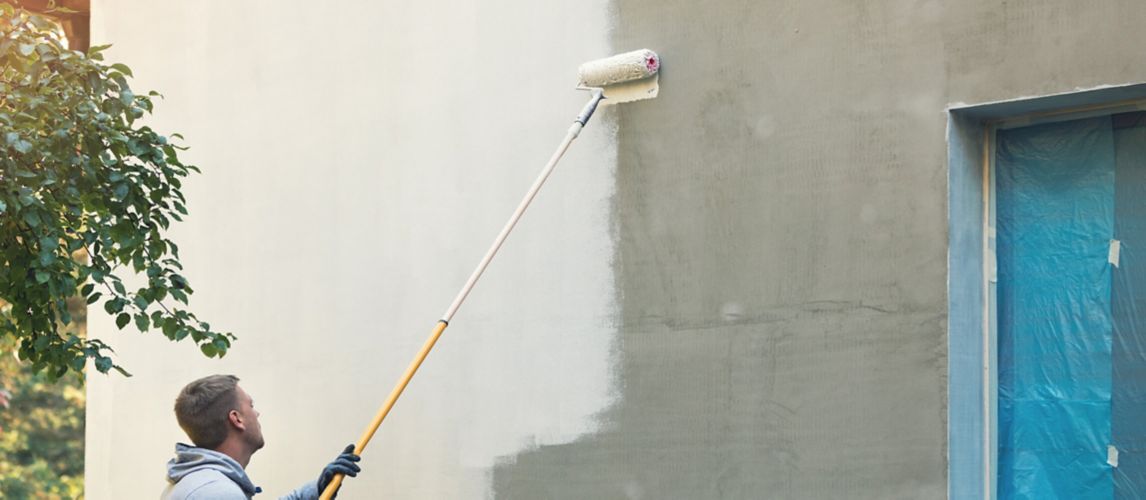
What is Masonry Paint?
Masonry paint is an acrylic-based paint specifically formulated for exterior use. It’s designed to bond well to rough, coarse surfaces. It is, therefore, ideal for use on masonry materials such as brick, render, concrete, cement, lime, stone, plaster and pebbledash. It is not, however, recommended for use on Fletton bricks.
Most masonry paints are water-based and have special properties that provide vital protection to exterior surfaces against weathering and pollution. Their properties vary, depending on the brand you buy. For example, they can be water-resistant or waterproof, dirt-resistant, resistant against mould and algae and UV-resistant. They can also be breathable, which means they keep moisture out of the property and allow any water already trapped in the brick to filter out. Masonry paint can also provide the property with a layer of insulation on a wall that may struggle to retain heat normally. Some masonry paint also has reflective and cooling properties.
And as well as offering protection, exterior wall paint improves the appearance of a property by brightening it up and bringing it back to life.
Types of Masonry Paint
There are three types of masonry paint: satin, smooth and textured. The best exterior masonry paint for your job will mainly depend on the type of surface you are painting.
This section explains what each type is and what it’s best used for.
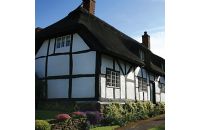
Satin masonry paint types
Satin masonry paint is a durable and flexible microporous paint that coats almost all exterior surfaces. It leaves a beautiful satin sheen to any surface it’s painted on.
This type of paint is best used for exterior trim areas, such as eaves, soffits, windowsills, porch ceilings and door frames. It’s also a self-priming paint, which means you don’t need to apply a separate primer before you paint, making the job quicker.
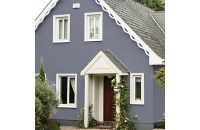
Smooth masonry paint types
Smooth masonry paint is a velvety paint with a consistency much like interior paint. It's quick and easy to apply and leaves a matt finish that's smooth to the touch and easy to clean. It's available in smooth or ultra-smooth versions.
This type of masonry paint is best used for painting rougher surfaces, such as render and pebbledash.
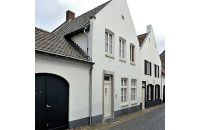
Textured masonry paint types
Textured masonry paint has a textured consistency that is designed to hide imperfections. The paint can flex and 'fill' cracks and dents on a surface, stopping moisture from getting into the masonry, preventing damage. It creates a rougher finish than smooth masonry paint, so it tends to gather more dirt and needs more frequent cleaning.
This type of masonry paint is best used for painting smooth surfaces that are uneven or have minor blemishes or cracks. It’s also ideal for buildings that are exposed to harsh weather conditions, such as tall buildings and buildings in coastal or open areas. Remember though,
Choosing the Colour of Your Masonry Paint
Masonry paint comes in various colours, ranging from white, cream and stone to grey, chocolate and black. There are a few things to consider when you choose a colour, such as the style of the property or whether you want to pick out any defining features. For example, you may want to choose one colour for the main building and one or two secondary colours for trims. Also, consider choosing a colour that complements window frames, the front door and the garage door.
How to Prepare Exterior Walls For Painting
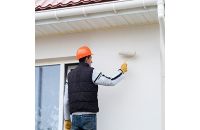
The key to a great looking and long-lasting paint job is in the preparation, as the paint won’t adhere to a surface that’s dirty and not primed. You can paint over existing masonry paint or use masonry paint on previously unpainted surfaces.
Here are the steps you need to take before you start painting:
- Rub the walls over with a stiff bristle brush to remove loose dirt and flaking paint.
- Clean the walls using a fungicidal wash.
- Fill any cracks with an exterior filler and smooth them down when the filler is dry.
- Seal walls that are powdery, chalky or dusty using a stabilising solution.
- Use masking tape to protect windowsills, drainpipes etc. and cover the ground in dustsheets.
- If the surface is unpainted, apply a layer of primer using a medium to long-piled roller (you won’t need to do this if you’ve already used a stabilising solution).
- If the surface has already been painted, apply a layer of undercoat using a medium to long-piled roller.
When the primer or undercoat is dry, the surface is ready for the masonry paint.
How to Calculate Square Footage For Exterior Painting
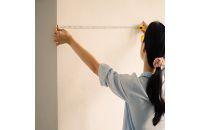
To work out how much masonry paint you need, work out the surface area of the walls you're painting. To do this, simply multiply the wall's width by the height. If you have multiple areas to paint, work each surface area out separately, then add them together. Then, as you'll need to apply two coats, multiply that number by two.
Once you know the total surface area, check the coverage on the can of the masonry paint you plan to buy. This is shown as metres square per litre (m2/Ltr). Note that smooth and ultra-smooth masonry paint covers a much larger area than textured paint. And most paints give coverage as a range rather than an exact figure. This allows for differences in the porosity of different surfaces, your painting technique and whether you use a brush, roller or paint sprayer to apply it. So, it’s always best to buy a little more than you think you’ll need.
How to Remove Masonry Paint
If there's already masonry paint on the surface you're repainting, you can usually paint over it if you prepare the surface well. However, if the paint is in very poor condition, it's best to remove it first to avoid the fresh paint flaking or peeling.
Here’s a guide on how to remove masonry paint from concrete, brick, stone and other types of masonry surface:
Tools and equipment needed:
-
Gloves and old clothes
-
Bleach
-
Sponge
How to remove masonry paint:
-
Scrape away flaking paint to remove it.
-
Mix bleach with water in a bucket and use a sponge to wash the surface to remove fungus and algae.
-
Leave the surface to dry.
-
Once dry, apply masonry paint stripper to the surface using a flat brush.
-
For best results, cover the surface in a plastic sheet to help the product be fully absorbed instead of evaporating.
-
Leave the paint stripper on the surface for the period stated on its packaging (this may be anything from 30 minutes to 30 hours, depending on how thick the layer of masonry paint you’re removing is).
-
Use a scraper to peel the old paint from the wall.
-
Rinse residual paint stripper away with water, using a hose or a bucket of water and a sponge.
What to Consider When Buying Masonry Paint
We’ve covered the most important information to help you buy masonry paint above, but here are a few more things to consider:
-
Do you want to spray masonry paint?
Spraying masonry paint, rather than using a brush or roller, will make the job faster, take less effort, and use less paint, therefore saving money. However, you can only spray smooth or ultra-smooth masonry paint. You can't spray textured paint as it contains sand that will clog up the sprayer.
To spray smooth masonry paint, use an electric paint sprayer. Most paints will need to be slightly watered-down to thin them, and you'll need to use the right sized nozzle for spraying. This will vary depending on the paint brand, so always check the instructions on the paint can and sprayer. -
Are you painting over existing masonry paint?
If you're painting over existing masonry paint, consider whether the old paint needs to be removed or if it can be painted over. In most cases, the old surface can be repainted as long as the surface has been adequately prepared first to ensure the new paint doesn't peel or flake. But if the old masonry paint is in a bad state, it would be best to remove it altogether. -
Have you decided what kind of paint to use on exterior brick?
To paint an exterior brick wall, it's best to use textured masonry paint. But, as brick is a porous material, ensure the paint is breathable to allow excess moisture to evaporate. If you use paint that isn't breathable, water will become trapped under the paint, causing damage to the bricks and resulting in the paint flaking, peeling and bubbling. -
Have you left enough time between coats of paint?
When painting an exterior wall, it's vital that you leave enough time for the paint to dry between the first and second coats. Applying the second coat too early will leave streaks and bubbles in the paint, resulting in an uneven finish and the paint peeling and flaking long before it should. The amount of time you need to leave between coats varies depending on the masonry paint you buy. Some only require a four-hour wait, while others need 16 hours.
